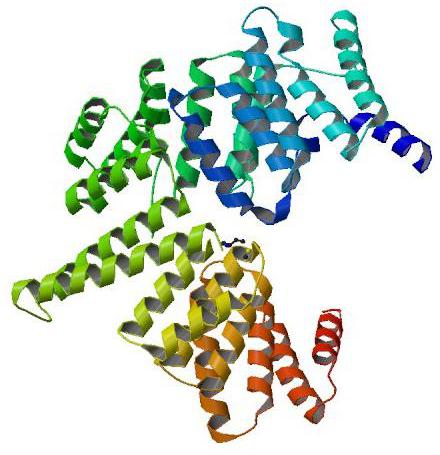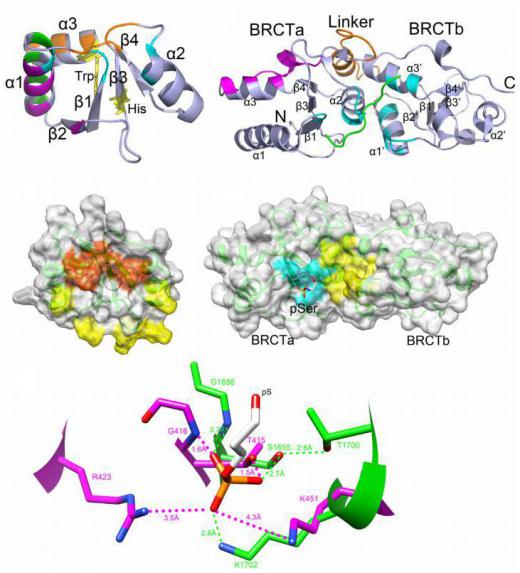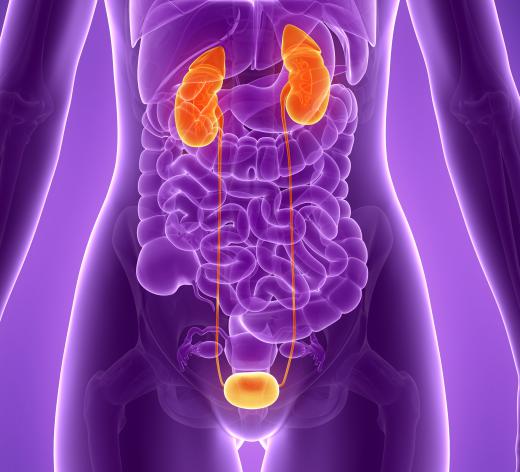What is Protein Binding?
Protein binding describes the ability of proteins to form bonds with other substances, and most commonly refers to the bonding of drugs to these molecules in blood plasma, red blood cells, other components of the blood, and to tissue membranes. It can, however, refer to other chemicals that enter the bloodstream. In the context of pharmacology, the amount of drug that is bound determines how effective it is in the body. The bound drug is kept in the blood stream while the unbound component may be metabolized or excreted, making it the active part. So, if a drug is 95% bound to a binding protein and 5% is free, that means that 5% is active in the system and causing pharmacological effects.
How Binding Happens

Proteins are very large, and enormously complex, molecules consisting of chains of amino acids joined by peptide bonds, and they can take on a variety of complicated shapes. They can bond with molecules, including other proteins, at particular places known as binding sites, which often consist of indentations into which other molecules, or parts of them, can neatly fit. The chemical properties of the binding site, and the other molecule, are also important: bonding will only take place if it is chemically feasible. A single protein may have more than one binding site.

One example is hemoglobin, the protein responsible for transporting oxygen from the lungs to other parts of the body. It has four sites that can bind to an oxygen molecule. The bond formed in this case is quite weak — it has to be, in order for the oxygen to be easily removed where it is needed. In other cases, molecules may bind more strongly. The tendency of a drug to bind with proteins, and the strength of the bond, are important factors in pharmacology.
Binding of Drugs

The proteins commonly involved in binding with drugs are albumin, lipoproteins, and a1-acid-glycoprotein (AGP). Acidic and neutral compounds will tend to bond with albumin, which is basic, while basic substances will primarily bind to the acidic AGP molecule. Acidic molecules may also bond with lipoproteins if the albumin is saturated. This is not binding in the strict sense of the term; it is closer to dissolving and is common in lipid, or fat, soluble substances.
Binding is often reversible and in these cases can create a chemical equilibrium, in which the chemical reaction can go backward and forward with no net change in reactants and products. This is represented as:
If the concentration of the unbound drug is reduced, some of the protein-drug complex may split to release more of the compound, maintaining the equilibrium. This means that a cell that is effective at extracting the unbound drug may extract more of it as the complex splits in restoring the balance.
The amount of binding and the fraction unbound — written as the amount of unbound drug over the total amount — are determined by the compound’s affinity for the protein, and their relative concentrations. This is important when considering other medications that a patient might be taking. Certain proteins may already be saturated, which would affect the amount of free drug and possibly change the pharmacological effects.
For example, if drug A saturated a certain binding protein and then drug B was not able to bind to it, then there would be a higher concentration of unbound B. Alternatively, if drug B has a stronger chemical affinity for the protein, it could displace A, raising its unbound fraction. This process happens fairly quickly, in minutes to hours, and both scenarios could have adverse effects. Many drugs, however, bind to different proteins or to different sites on the same one, or are not present in a high enough relative concentration to cause saturation, and so do not compete with the other medications that are in use.
Likewise, the capacity of the body to absorb a medication can affect its clearance into the system. Kidney failure and liver disease often negatively impact the ability to absorb the unbound drug. For these reasons, previous medical issues, the total concentration and unbound fraction of the drug, and any other medications a patient may be taking need to be considered.
Testing
Newly developed drugs may be tested for their tendency to bind to proteins using a protein binding assay. This can be performed with samples of appropriate plasma or tissue, which may be incubated with the agent to be tested. After a given time interval the bound and unbound portions are separated — for example, by using a very fine filter that will not allow large protein molecules to pass through — and the extent of binding can then be determined.
AS FEATURED ON:
AS FEATURED ON:













Discussion Comments
What is binding ? Why is it important?
What plasma protein exclusively binds basic drugs?
@thedoctor-I think I remember this article; they actually used protein binding assays to find metal binding proteins in seafood. In the study I read they concluded that the presence of these proteins indicated toxic metal exposure, they did not really test for them. It would be really great if they could develop this into some kind of test for seafood prior to it being sold as food. Mercury poisoning is some scary stuff and the more they can do to limit the amounts of mercury in the food the better. Mercury gets a lot of press, but I am sure that the other metals are going to be found to be just as toxic and bad for all of us soon as well.
I read about some tests being done with binding proteins and determining toxic metal exposure in people. In the example I read they tested different seafood for metal contamination such as mercury and iron. They referred to the proteins as metal binding proteins and claim they may be able to use them as a test for toxic exposure at some time in the future. Has anyone read anything about this?
@anon168131- You could use a protein binding assay to determine that calculation. Most of that kind of work would be done in a controlled laboratory environment under very strict conditions and the result should wind up being something that is very repeatable. This calculation is not one that is going to vary from person to person, only based on criteria such as which drug is used and the weight of the test subject and other measurable factors. Once the variables are set the tests should be able to calculate very accurately and produce consistent results.
how to calculate bound drug to unbound drug in the term of absorbency?
Post your comments